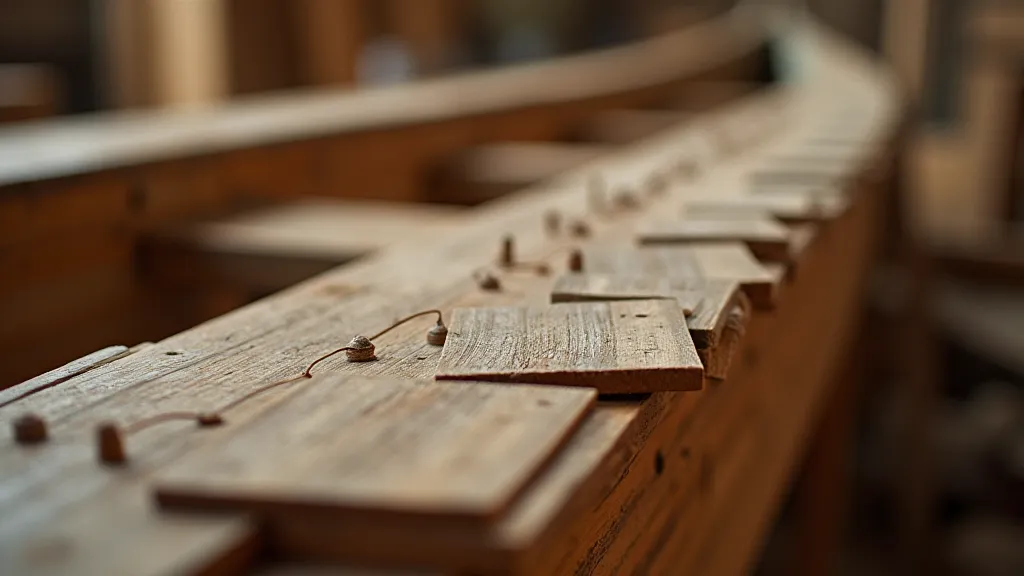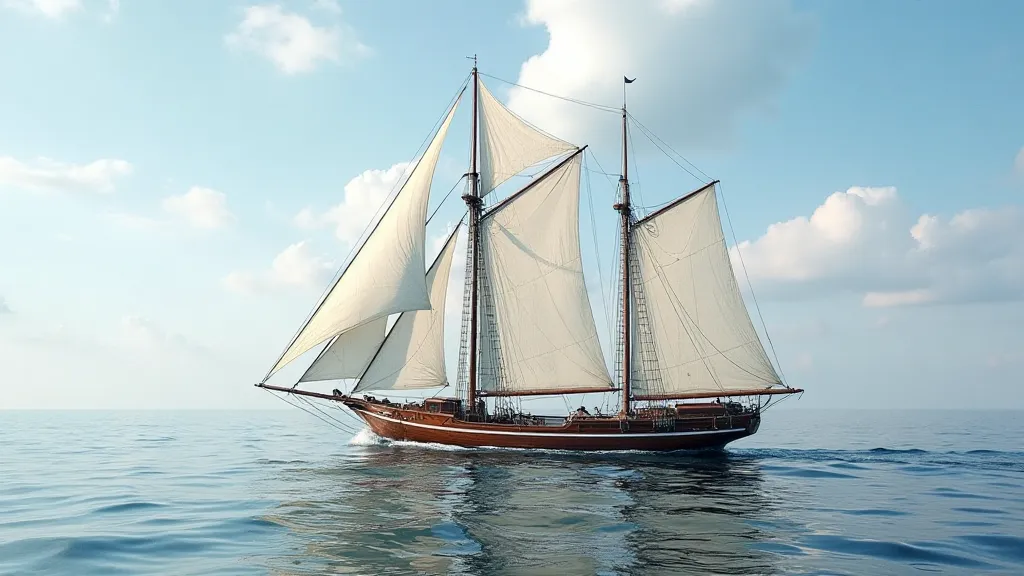The Clinker Hull: Exploring Overlapping Planks
The clinker hull, a distinctive and enduring method of boat building, represents a cornerstone of maritime history across numerous cultures. Unlike the carvel hull, which utilizes flat planks edge-to-edge, the clinker hull employs overlapping planks. This seemingly simple difference yields a hull with remarkable strength, flexibility, and a characteristic aesthetic. Understanding the principles behind the clinker hull provides a fascinating glimpse into the ingenuity of early boat builders and the challenges they overcame.
Origins and Distribution
Evidence of clinker construction dates back millennia, with examples found in Scandinavia, the Baltic region, and across Europe. The technique was particularly prevalent amongst the Norse, whose longships epitomized its effectiveness. These vessels weren't merely transport; they were instruments of exploration, warfare, and trade, and their design was crucial to their success. Interestingly, similar overlapping plank techniques also developed independently in other regions, demonstrating a universal response to the challenges of building seaworthy vessels. The need for robust vessels that could withstand harsh conditions often led to the development of analogous building methods – a testament to the power of problem-solving across cultures. The development of boatbuilding techniques, as seen in the Nordic regions, often influenced the approaches taken in geographically distant locations, prompting innovation and adaptation. Early maritime cultures often drew inspiration from the successes of others, leading to the independent development of similar solutions.

The Construction Process: A Labor of Skill
The construction of a clinker hull is a meticulous process demanding considerable skill and patience. Each plank, typically narrower than those used in carvel construction, is carefully shaped and bent to conform to the frame of the boat. The overlapping sequence is key; each plank is positioned so that a portion of its edge is covered by the plank above and below. This overlap isn't merely cosmetic. It’s a carefully engineered feature contributing to the hull’s strength and resilience. This level of detail and precision echoes practices found in other historical shipbuilding traditions. For example, practices akin to the intricate woodworking seen in clinker construction are reflected in traditional shipwrighting in the Mediterranean, showcasing the diverse approaches to maritime innovation. The process goes far beyond simply joining planks; it’s about understanding the grain of the wood, anticipating stresses, and crafting a structure that will endure the harsh realities of the sea.
The planks are fastened together using rivets, often made of copper or bronze. The placement of these rivets is crucial, ensuring a tight seal and distributing stress evenly across the hull. The gaps between the planks are caulked with oakum (tarred hemp fiber) and sealant, creating a watertight barrier. The process is intensely physical, requiring a deep understanding of wood properties and the stresses involved in withstanding the forces of the sea. The entire endeavor requires an intimate knowledge passed down through generations, highlighting the profound connection between the craftsman and the sea.
Why Clinker Works: Strength and Flexibility – Engineering Principles in Action
The clinker hull's strength isn’t solely reliant on the thickness of the planks. The overlapping structure creates a layered effect, allowing the hull to flex and absorb impacts. This flexibility is a significant advantage in rough seas, reducing the risk of structural failure. Imagine a longship battling a storm – the clinker construction allowed it to ride the waves, rather than break under their force. The overlapping planks also increase the overall strength, preventing cracks and leaks that could compromise the vessel's integrity. This is achieved through a combination of factors; the layered construction distributes stress, and the rivets act as crucial joining points that prevent plank separation. This is a far cry from the more rigid construction of some other vessels. Different cultures have developed unique solutions to similar challenges, and understanding these differences offers a rich perspective on human ingenuity. The pursuit of seaworthiness has always been a driving force behind innovation, and the principles behind the clinker hull provide a perfect illustration of this.
Furthermore, the layered construction creates a remarkably light hull. While seemingly counterintuitive, the reduced need for thick, single planks contributes to a lighter overall weight, improving performance and fuel efficiency. This weight reduction isn’t just about speed; it directly impacts the vessel's stability and maneuverability, especially vital for vessels navigating treacherous waters. The very principles guiding the construction of a clinker hull have influenced other unique designs, like the innovative ferrocene, demonstrating the ripple effect of maritime engineering advancements. The constant desire to optimize performance led to experimentation and refinement, ultimately pushing the boundaries of what was possible.
Aesthetic Qualities: Beauty Born of Functionality
Beyond its functional benefits, the clinker hull possesses a unique aesthetic appeal. The visible seams and the play of light across the overlapping planks create a visually striking appearance. The distinctive "wavy" profile of a clinker-built boat is immediately recognizable and evokes a sense of tradition and craftsmanship. This aesthetic isn't accidental; it’s a direct result of the structural requirements of the design. The exposed rivets and plank edges tell a story of skilled hands and a deep understanding of the materials. This appreciation for artistry and function is present in boatbuilding traditions worldwide, often reflecting a deep understanding of the natural world. The way the light plays across the planks creates a living sculpture, constantly changing with the conditions of the sea.

The Science Behind the Seam: Exploring Hydrodynamics and Stability
The clinker hull’s design isn't just about strength; it also profoundly impacts its hydrodynamic properties. The overlapping planks create a complex surface, influencing the way the hull interacts with water. This interaction minimizes drag and improves efficiency. Furthermore, the shape contributes to the boat's stability, ensuring it remains upright even in challenging conditions. Early boat builders, often lacking the benefit of modern scientific tools, intuitively grasped these principles through generations of observation and experimentation. They understood that a boat’s shape directly influenced its performance and safety. These were not haphazard constructions but the result of centuries of refinement, a testament to the power of practical knowledge passed down through generations. It's fascinating to consider how these early mariners, without the aid of computational fluid dynamics, could achieve such remarkable results through trial and error and keen observation.
Preserving the Craft: A Legacy of Skill and Knowledge
Modern Revival and Preservation
While modern boat building often favors more industrialized methods, the clinker hull hasn't disappeared. There's a growing appreciation for the artistry and skill involved in traditional boat building, and many boat builders are reviving the clinker technique for both reproduction vessels and new designs. Preserving these techniques is vital, not only for maintaining maritime history but also for keeping alive a valuable craft and a unique cultural heritage. The knowledge and skills required to construct a clinker hull are incredibly specialized, and their loss would represent a significant blow to cultural heritage. These skills are not easily taught; they are passed down through generations of master craftsmen, emphasizing the importance of mentorship and apprenticeship. Each plank is a testament to a rich history, a history whispered through the timber and shaped by the patient hands of a master builder. Understanding the nuances of this craft provides a glimpse into a world of traditional skills and a deep connection to the sea. Furthermore, the principles behind clinker construction continue to inspire contemporary designers, proving that ancient techniques can still be relevant in the modern world. The ongoing effort to revive and preserve this craft is a commitment to honoring the ingenuity and artistry of those who came before us, ensuring that their legacy continues to inspire future generations.

The Silent Language of Design: Context and Innovation
The development of the clinker hull wasn's an isolated event. It occurred within a broader context of maritime innovation and cultural exchange. The challenges of shipbuilding have consistently driven ingenuity, leading to a wide range of solutions across different cultures. Analyzing these solutions, and understanding the underlying principles, reveals the silent language of design - a communication between generations of shipwrights striving to overcome the same challenges. For instance, the subtle curves and angles of a clinker hull, designed to optimize both strength and hydrodynamics, reflect a level of sophistication that is often underestimated. The design choices weren't arbitrary; they were the result of careful observation and experimentation, refined over centuries. This attention to detail is a hallmark of maritime traditions across the globe, often reflecting a deep understanding of the natural world and the forces that govern it. The iterative process of shipbuilding, driven by necessity and a thirst for improvement, has left an indelible mark on maritime history, a testament to the enduring power of human ingenuity and the relentless pursuit of a better way to navigate the seas. The knowledge passed down through generations often incorporated elements from other cultures, showcasing the interconnectedness of maritime development across the globe.





